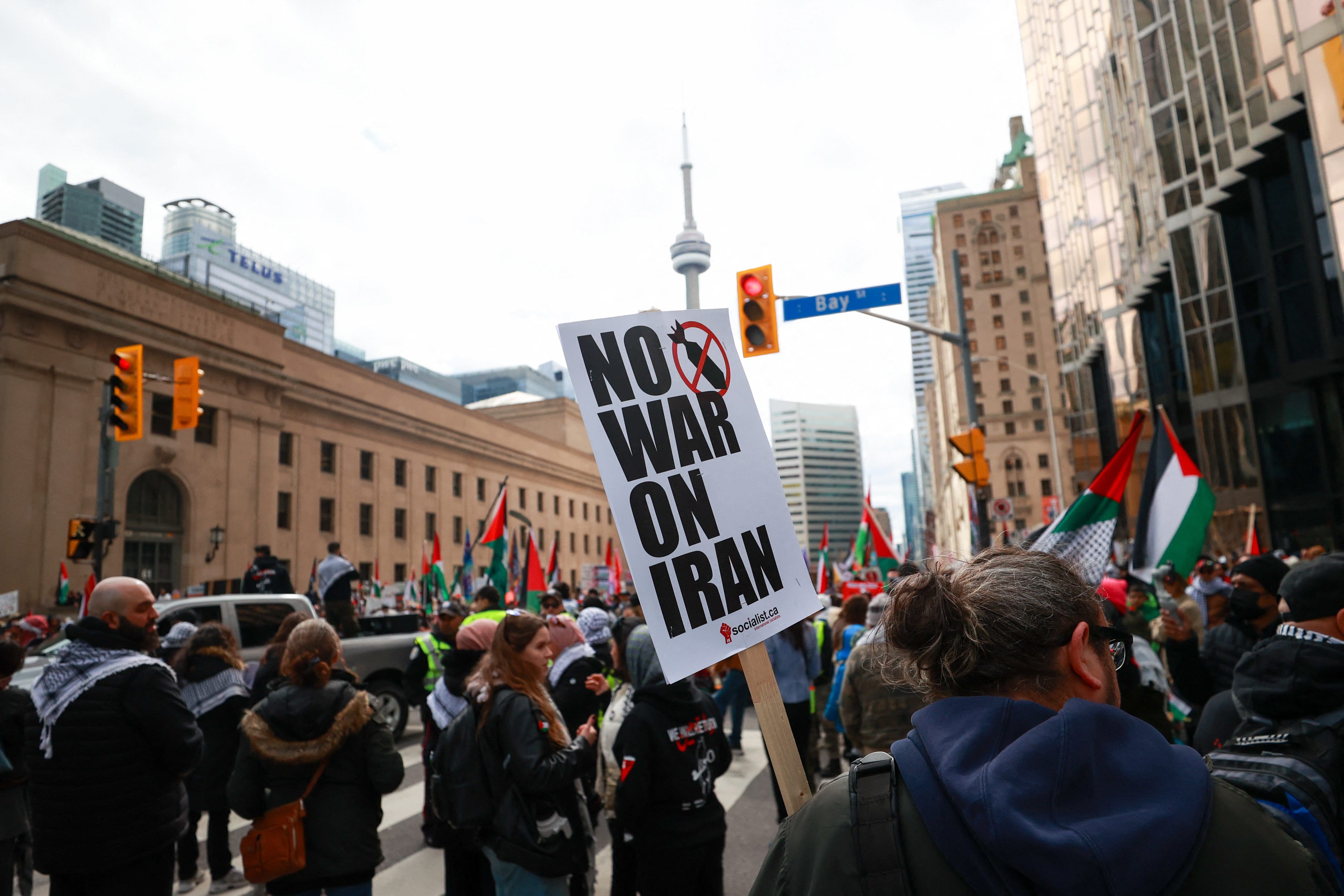The Islamic Republic of Iran’s direct attack against Israel was the first of its kind since the country’s clerical rulers seized power in 1979. In a major show of force, Iran launched more than 300 drones and missiles from its own territory—an unprecedented break with its past approach. Israel and its allies, including the United States, United Kingdom, France, and Jordan, were able to neutralize the vast majority of the projectiles, and Tel Aviv retaliated with a low-profile strike on an Iranian airbase in the Isfahan region where major nuclear facilities are located. Nevertheless, Tehran’s brazen assault represents a game-changing moment in the long history of indirect warfare between the two sides.
Shadow War
For years, Israel has attacked Iran-aligned groups in the region, particularly in Syria. These strikes have mostly been concentrated in areas around Damascus and military zones in the northwest and southwest in proximity to the Golan Heights. Tel Aviv and Washington have targeted Iranian Revolutionary Guard Corps (IRGC) facilities and weapons transfers, including on the border with Iraq where the U.S. has also engaged Iranian proxy groups.
Israel’s foremost objective is to disrupt Iran’s attempts to turn Syria into a launchpad for cross-border attacks, while the U.S. has focused on protecting forces involved in the coalition to defeat ISIS. Israel has also conducted notable operations in Lebanon, where it has assassinated Hezbollah commanders and hit the group’s assets and facilities, especially since October 7. For several years, Israel is also alleged to have assassinated scientists within Iran to cripple Iran’s nuclear program, but Tel Aviv has neither confirmed nor denied responsibility.
For its part, the Iranian regime has both directly and indirectly—through its proxies—targeted coalition bases across Iraq and Syria as part of a years-long, concerted effort to expel U.S. forces from both countries. Indeed, this has been a key tenet of Tehran’s foreign policy for decades. Since October 7, Iran and its proxies, particularly the Houthis in Yemen, have also orchestrated a campaign of missile and drone strikes on Israeli commercial interests, U.S. bases, and Western vessels in the Red Sea and North Arabian Sea. Iran sees the U.S. and Israel as two sides of the same coin; targeting the U.S. in response to Israeli attacks has helped Tehran limit the blowback and confine these hostilities outside its borders until recently that is.
Direct Confrontation
It is precisely against this backdrop that Iran’s direct attack on Israel represents a potential paradigm shift, upending the unwritten rules of engagement that have underpinned their conflict in recent years and kept it contained. Part of this shift can be attributed to the post-October 7 escalatory environment. But it is also the culmination of Iran’s decades-long, systemic cultivation of militia groups—either established or empowered to project Tehran’s influence in the region—which have amassed transnational capabilities matched by few other armed non-state actors.
The Middle East could be in the throes of an Iranian-sponsored remaking of the region’s security architecture. From Iraq to Lebanon and Syria to Yemen, the pillars of this architecture are already in place. This has allowed Iran to instrumentalize the war in Gaza to leverage its regional influence. Drawing on the Popular Mobilization Forces (PMF) in Iraq, Hezbollah in Lebanon and Syria, and the Houthis in Yemen allows Tehran to pressure adversaries and deflect the lion’s share of blowback to other countries.
U.S. Policy Emboldened Iran
For its part, the West has failed to counter this development. Take the Houthis, for example, which have held international shipping hostage in the crucial Bab al-Mandab Strait for months since October 7. Despite mobilizing an international coalition to deter the Houthis, Washington’s inability to do so has enhanced the Yemeni group’s geopolitical status and empowered Iran. The group has allowed Tehran to target its rivals while limiting exposure and maintaining plausible deniability. Houthi attacks have also increased Iran’s leverage in its nuclear negotiations with the U.S. and increased international pressure on Israel.
The failure to deter the Houthis has also enhanced Iran’s regional leverage vis-à-vis powers further east. Reportedly, the Houthis have granted shipping access to Chinese and Russian vessels, while forcing India—which has drawn closer to Israel and the West in recent years—to negotiate safe passage for its ships with Iran, the Houthis’ only patron. Such dynamics allow the Iranian leadership to consolidate its power domestically in the face of widespread unrest.
But the failure runs even deeper. For years, the U.S. upheld a policy of confining tensions with Iran to the shadows, particularly in theaters like Syria. This was premised on the idea that it would keep a regional confrontation at bay and maintain space for de-escalation with Iran as the two sides negotiated over its nuclear program. This was a miscalculation, as Iran exploited the diplomatic cover provided by negotiations to strengthen its grip on the region and expand ties with Russia and China. In Syria, Iran accelerated its mobilization of proxies into the country––including fighters from Iraq, Lebanon, and Afghanistan––after Russia entered the civil war in 2015 and Washington failed to decisively back the rebel opposition groups.
In Iraq, Iran-aligned militias expanded their influence after the West failed to support the Kurdish Peshmerga forces in the oil-rich city of Kirkuk in 2017, which saw a crucial Western ally withdraw from the province and gift Iran and its allies’ strategically important and resource-rich territory that also had cross-border implications in Syria. There are several other examples where U.S. and Western miscalculations and inaction have empowered Iran and its proxies, including a notable inflection point in 2019 where the Houthis struck Saudi Arabia’s oil facilities. Iran escaped accountability for this unprecedented assault, paving the way for further such attacks.
What Next?
As Iranian-aligned groups increased their power within various states, their collective capacity to project influence has also grown regionally. Yet it could also lead to over-reach. Iran’s assessment that it can avoid significant blowback at home may be a miscalculation if it pushes too far. Israel’s counterattack and its elimination of the most senior IRGC commanders demonstrate Iran’s vulnerability.
Moreover, Iran can hardly claim the moral high ground in the aftermath of Israel’s airstrike on its consulate in Damascus. Iran and its proxies have launched countless missile and drone strikes on other nation’s diplomatic facilities, including firing missiles near the U.S. consulate in Erbil, an attack on the U.S. embassy in Baghdad in 2021, and several suicide bombings in the 1980s on U.S. embassies in Kuwait and Lebanon, as well as Israel’s embassy in Argentina in 1992 and 1994.
Iran could be confronted with expanded punitive military and economic measures in the wake of its attack on Israel. It is entirely possible that the U.S. could widen and enforce its sanctions on Iran, while the UK and European countries might build on a number of sanctions packages and even designate the IRGC as a terrorist organization. Washington could even go as far as targeting economic sanctions at curtailing Iran’s ability to use Iraqi banks and financial institutions to circumvent Western sanctions. However, the enforcement of U.S. and Western sanctions would have devastating reverberations domestically in Iran.
At the same time, Israel can ill-afford a major front opening with Iran as Tel Aviv continues its military campaign in Gaza, especially if Tehran mobilizes its entire proxy infrastructure. As a consequence, a return to a shadow war that reimposes a red line prohibiting direct attacks represents the best hope of avoiding a regional conflagration. Israel may be tempted to follow up its most recent strike in Isfahan with more operations, but this does not preclude the possibility of putting more intensified direct exchanges on hold. Already, this scenario appears to be materializing.
Confining the war to territories outside of Iran and Israel is not ideal and will raise objections from countries such as Syria and Iraq. Nevertheless, this represents the least objectionable option aimed at preventing further escalation—one that could also allow some breathing space for cooling tensions and containing the region’s trajectory toward a full-scale war.
The opinions expressed in this article are those of the author and do not necessarily reflect the views of the Middle East Council on Global Affairs.

